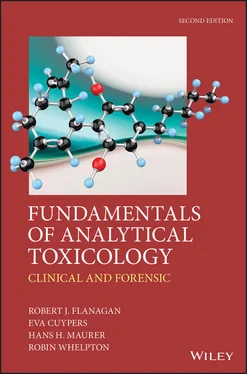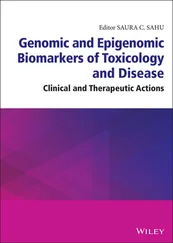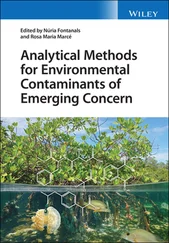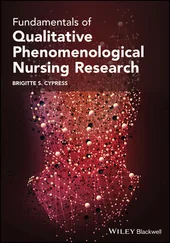bSometimes given i.v. to treat poisoning
cSome urinary bacteria possess an enzyme able to convert a tryptophan metabolite into a substance that interacts with the plastic of urine collection bags to produce indirubin (red) and indigo (blue) giving an intense purple/black colour. Although dramatic, purple urine bag syndrome is harmless and disappears after treatment of the infection (Kumar et al ., 2018)
For post-mortem work, if possible, 2 x 25 mL urine samples should be collected in sterile plastic container(s), one with preservative (2 % w/v fluoride). Ethanol may be produced (Foley, 2018), and also degraded by microbial action, unless appropriate precautions are taken. If only a small amount of urine is available, all should be preserved with fluoride (but see note on fluoride poisoning above) in a plain 5 mL plastic or glass tube. Boric acid or thiomersal [thimerosal; sodium 2-(ethylmercuriothio)benzoate] containers should NOT be used because of sample contamination with borates and mercury, respectively. Urine specimens collected post-mortem are valuable in screening for drugs or poisons, particularly illicit drugs, and are often used for quantitative ethanol or GHB analysis to corroborate the results of a blood analysis (Sections 22.4.1.1 and 22.4.11, respectively).
Gastric lavage is rarely performed nowadays in treating acute poisoning. However, if a sample of stomach contents is obtained soon after a poisoning episode, large amounts of poison may be present while metabolites may be absent. When investigating possible poisoning, it is important to obtain the first sample of any lavage fluid because later samples may be very dilute. A representative portion ( ca . 50 mL) without preservative should be taken for analysis. However, all stomach contents should be retained and the volume noted, and this information passed to the laboratory. If the blood concentration is difficult to interpret, most notably in post-mortem work, it can be helpful to measure the amount of poison present in the stomach.
Stomach contents are especially useful if poison(s) which are not easy to measure reliably in blood such as cyanide have been taken orally. However, great care is needed if cyanide salts or phosphides, for example aluminium phosphide, are thought to have been ingested, particularly on an empty stomach, because highly toxic hydrogen cyanide or phosphine gas may be released because of reaction with stomach acid. Additionally, the presence of these and other volatile materials can lead to cross-contamination of other biological specimens unless due precautions are taken.
With stomach contents (and also scene residues – Section 2.3.20), characteristic colours or smells ( Table 2.8) may indicate a variety of substances. Many other compounds (for example, ethchlorvynol, methylsalicylate, paraldehyde, phenelzine) also have distinctive smells. Very low or high pH values may indicate ingestion of acids or alkali, while a green/blue colour suggests the presence of iron or copper salts.
Table 2.8 Smells associated with particular poisons. a
| Smell |
Possible cause |
| Almonds |
Cyanide |
| Cloves |
Oil of cloves |
| Fruity |
Alcohols (including ethanol), esters |
| Garlic |
Arsenic, phosphine |
| Mothballs |
Camphor or naphthalene |
| Nail-polish remover |
Acetone, butanone |
| Pears |
Chloral |
| Petrol |
Petroleum distillates (may be vehicle in pesticide formulation) |
| Phenolic (carbolic soap) |
Disinfectants, cresols, phenols |
| Shoe polish |
Nitrobenzene |
| Stale tobacco |
Nicotine |
| Sweet |
Chloroform and other halogenated hydrocarbons |
a CARE – specimens containing cyanides may give off hydrogen cyanide gas, especially if acidified – stomach contents are often acidic. Genetic variation means that not everyone can detect hydrogen cyanide by smell. Similarly, sulfides evolve hydrogen sulfide and phosphides evolve phosphine – the ability to smell hydrogen sulfide (rotten egg smell) is lost at higher concentrations
Examination using a polarizing microscope may reveal the presence of tablet or capsule debris. Starch granules used as ‘filler’ in some tablets and capsules may be identified by microscopy using crossed polarizing filters when they appear as bright grains marked with a dark Maltese cross. If distinct tablets or capsules are observed, these should be placed in individual containers. Such items and any plant remains or specimens of plants thought to have been ingested should be examined separately.
The local poisons information service or pharmacy will normally have access to publications or other aids to the identification of legitimate and sometimes illicit tablets/capsules by weight, markings, colour, shape, and possibly other physical characteristics. Identification of such material by reference to a computerized product database may be possible.
Whilst not normally considered in either emergency clinical or post-mortem work, there is much interest in the collection of oral fluid from individuals because collection is non-invasive and reflects to an extent recent drug or alcohol usage. Moreover, oral fluid collection for forensic purposes, drug-impaired driving for example, has the advantage that sampling can be carried out by suitably trained staff while the donor is under observation, hence it is more difficult to adulterate or substitute the specimen (Section 18.3.1.1). There is also interest in oral fluid collection for TDM purposes (Section 20.3.3).
Sweat production is not uniform in either amount, or composition. ‘Insensible sweat’ is moisture that is lost from the body through the skin and does not form droplets. ‘Sensible sweat’, i.e. sweat that can be seen as liquid, arises from two types of gland, apocrine and eccrine. The former, which tend to be located in the axillae, pubic, and mammary areas, are larger and secrete a thicker substance. The surface of the skin is also covered with sebaceous secretions, chiefly lipids, higher concentrations being found on the scalp and forehead. Thus, the fluid collected for analysis by patches applied to the skin is generally a mixture of secretions and can only give an indication of drug exposure over the period when the device was attached to the skin.
Collection of sweat has been suggested as a means of testing for misused drugs. Surface contamination by exposure to drug use by others (e.g. smoking either cocaine, or cannabis) is a potential problem when analysing sweat. There are two methods of collecting and testing sweat. One is the Drugwipe, which may also be used with oral fluid, and has found use for roadside testing (Section 17.3.2.1). The other is a tamper-proof ‘sticking-plaster’ that may be used to collect sweat over several days and is generally used in detoxification clinics and US prisons. The patches are not amenable to point-of-contact testing (POCT).
Measurement of concentrations of volatile substances in exhaled (expired) air by infra-red or other device is of course essential in roadside testing for ethanol and valuable in assessing exposure to poisons such as carbon monoxide ( Chapter 17). Direct MS of exhaled air can also detect many compounds, including not only inhalational, but also i.v. anaesthetics such as propofol (Dong et al ., 2017). However, the use of these techniques is limited by the need to take breath directly from live subjects. Similarly, collection of exhaled air into an impervious plastic (Tedlar TMor PTFE) bag can facilitate the analysis of a number of substances and metabolites via subsequent GC or GC-MS analysis (Castellanos et al ., 2016). Misused drugs can also be detected in exhaled air (Section 18.6).
Читать дальше












